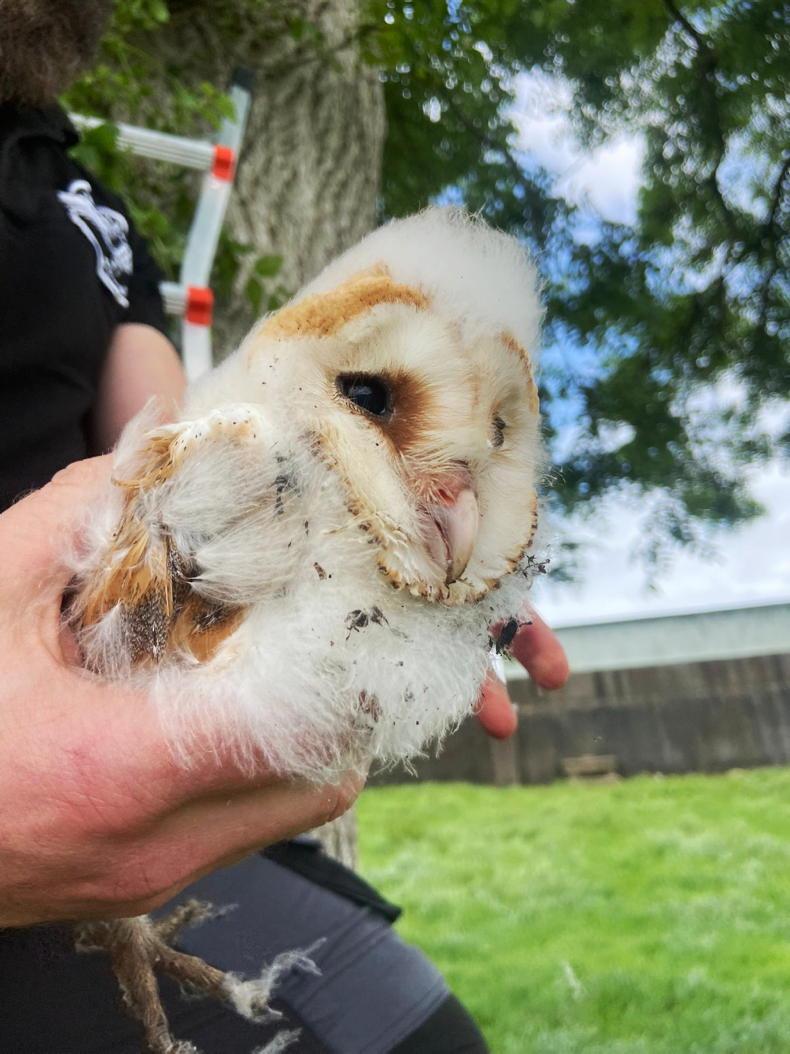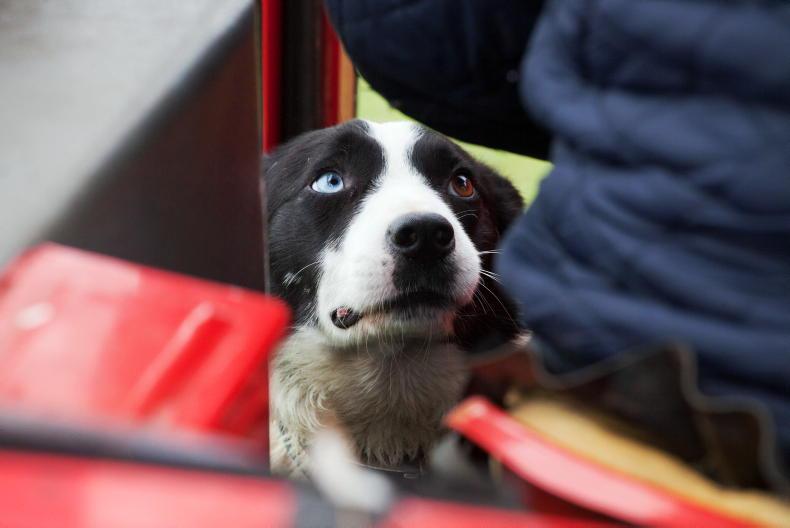“My interest in wildlife comes from my dad. I grew up beside Garbally College in Ballinasloe. Every evening when I was a small kid, Dad would put me up on his shoulders and we’d go up around Garbally college. There’s a big forest there and he’d point out the squirrels and anything else moving around.
I didn’t grow up on a farm, but my uncle had a farm. We used to spend summers up there. I’ve always had this affinity with not just wildlife, but animals in general.
I did photography in college. It was mainly wildlife that I photographed. People often asked, ‘What animals have you taken pictures of?’ and I’d never seen a barn owl.
I’ve been involved in wildlife rescue probably for about 22 years, on and off. One evening I was sitting at home. I was thinking about the fact that I did a lot of work with a lot of different animals. I wanted to concentrate on something specific where I could make a difference. I thought of the barn owl.
Around this time as well I met a guy I grew up with. I was telling him I was thinking of doing something with barn owls, but I’d never seen one. He said: “Give me a minute. There’s a fella up the road who has them but he’s told no one. I’ll ring him.”
I went up there at about 12 o’clock at night and I watched the barn owls come in and out. That was me hooked. I was like, right, I’m going to do something. There aren’t many people who will tell you that when they see an owl, there isn’t something unique about them.
I knew there was great work being done with barn owls, but it tends to be seasonal. There was no group specifically for barn owls that does work all year around.
We started by doing a bit with the Barn Owl Trust in the UK. We wanted to set up the equivalent here in Ireland. So we came up with the name, the Barn Owl Project.
We did the usual stuff – set up your group, get your insurance and send people on courses. Even though I set it up in 2018, we didn’t go live with it until 2019.
Red list
The barn owl was on the red list; it still is. When I started into this there were around 400 breeding pairs. We’re more than likely over 1,000 now. We can only estimate. People would think that’s a lot, it’s not. A thousand pairs means that at any potential time they could be wiped out over 10 years.
The number one killer of barn owls is starvation. That comes from habitat destruction, but worse than that, their prey might not have a habitat. Land management might not allow mice, rats or shrews to live there – all the small mammals barn owls need to eat to survive.

A barn owl.
The next biggest thing we would see on the ground would be rodenticide, so rat poison. Generally, barn owls don’t die from secondary poisoning. But sometimes because of it they don’t breed, they’ll run into cars or trees and they can’t hunt, so they die from starvation.
The Barn Owl Project does a few different things, but mainly raising awareness of barn owls in the community and rehabilitating injured owls.
The idea behind the project really was to get out there to talk to the farming community, mainly because barn owls are in that area. We knock on doors, talk to farmers and find out if there are nest sites so we can document them and use those points to increase numbers.
I’ve been on thousands of farms over the last few years, and I mean thousands of farms. A lot of the time we cold call on farmers. I’ve never been refused once I mention a barn owl. I’ve never had a farmer say they don’t want them. They’re always trying to help.
We’ve 60 talks done already this year by volunteers. We’ve been in schools, nursing homes, spoken to community groups and tidy towns committees.
With our rehabilitation work, we rescue a lot of birds from all over the country. This year we are close to 42 rescues of barn owls and about 20 rescues of long-eared owls.
Passion project
I’ve lived in Galway city for the last five years. I work full-time in Thermo King in Galway and they’re very supportive of the project.
The project probably costs about €15,000 a year to run. We have people that back the project and others that supply materials.
People often ask me: ‘What do you get out of this? You’re not getting any money, what’s in this for you?’
To be honest with you, when I come home in the evening after meeting somebody new or we’ve been involved in a successful rescue, I feel I’ve achieved something, I’ve done something.
That’s the same if you ask any of the volunteers. We’ve 32 transport volunteers and running the project primarily there’s eight of us.
We have an email address and a 24-hour phone number if people want to talk about setting up nest boxes or if they’ve spotted a barn owl or a barn owl that might need help. All the information is on our website too, www.thebarnowlproject.ie
It was announced recently that a barn owl-specific measure will be included in the new Agri-Climate Rural Environmental Scheme (ACRES). It requires adopting an integrated pest management approach to reduce the use and effects of rodenticides and to provide a nest box in a suitable location. The barn owl measure is only available to farmers who meet certain criteria.
Read more
Farmers should consider barn owl beneficial measures in ACRES: BirdWatch Ireland
“My interest in wildlife comes from my dad. I grew up beside Garbally College in Ballinasloe. Every evening when I was a small kid, Dad would put me up on his shoulders and we’d go up around Garbally college. There’s a big forest there and he’d point out the squirrels and anything else moving around.
I didn’t grow up on a farm, but my uncle had a farm. We used to spend summers up there. I’ve always had this affinity with not just wildlife, but animals in general.
I did photography in college. It was mainly wildlife that I photographed. People often asked, ‘What animals have you taken pictures of?’ and I’d never seen a barn owl.
I’ve been involved in wildlife rescue probably for about 22 years, on and off. One evening I was sitting at home. I was thinking about the fact that I did a lot of work with a lot of different animals. I wanted to concentrate on something specific where I could make a difference. I thought of the barn owl.
Around this time as well I met a guy I grew up with. I was telling him I was thinking of doing something with barn owls, but I’d never seen one. He said: “Give me a minute. There’s a fella up the road who has them but he’s told no one. I’ll ring him.”
I went up there at about 12 o’clock at night and I watched the barn owls come in and out. That was me hooked. I was like, right, I’m going to do something. There aren’t many people who will tell you that when they see an owl, there isn’t something unique about them.
I knew there was great work being done with barn owls, but it tends to be seasonal. There was no group specifically for barn owls that does work all year around.
We started by doing a bit with the Barn Owl Trust in the UK. We wanted to set up the equivalent here in Ireland. So we came up with the name, the Barn Owl Project.
We did the usual stuff – set up your group, get your insurance and send people on courses. Even though I set it up in 2018, we didn’t go live with it until 2019.
Red list
The barn owl was on the red list; it still is. When I started into this there were around 400 breeding pairs. We’re more than likely over 1,000 now. We can only estimate. People would think that’s a lot, it’s not. A thousand pairs means that at any potential time they could be wiped out over 10 years.
The number one killer of barn owls is starvation. That comes from habitat destruction, but worse than that, their prey might not have a habitat. Land management might not allow mice, rats or shrews to live there – all the small mammals barn owls need to eat to survive.

A barn owl.
The next biggest thing we would see on the ground would be rodenticide, so rat poison. Generally, barn owls don’t die from secondary poisoning. But sometimes because of it they don’t breed, they’ll run into cars or trees and they can’t hunt, so they die from starvation.
The Barn Owl Project does a few different things, but mainly raising awareness of barn owls in the community and rehabilitating injured owls.
The idea behind the project really was to get out there to talk to the farming community, mainly because barn owls are in that area. We knock on doors, talk to farmers and find out if there are nest sites so we can document them and use those points to increase numbers.
I’ve been on thousands of farms over the last few years, and I mean thousands of farms. A lot of the time we cold call on farmers. I’ve never been refused once I mention a barn owl. I’ve never had a farmer say they don’t want them. They’re always trying to help.
We’ve 60 talks done already this year by volunteers. We’ve been in schools, nursing homes, spoken to community groups and tidy towns committees.
With our rehabilitation work, we rescue a lot of birds from all over the country. This year we are close to 42 rescues of barn owls and about 20 rescues of long-eared owls.
Passion project
I’ve lived in Galway city for the last five years. I work full-time in Thermo King in Galway and they’re very supportive of the project.
The project probably costs about €15,000 a year to run. We have people that back the project and others that supply materials.
People often ask me: ‘What do you get out of this? You’re not getting any money, what’s in this for you?’
To be honest with you, when I come home in the evening after meeting somebody new or we’ve been involved in a successful rescue, I feel I’ve achieved something, I’ve done something.
That’s the same if you ask any of the volunteers. We’ve 32 transport volunteers and running the project primarily there’s eight of us.
We have an email address and a 24-hour phone number if people want to talk about setting up nest boxes or if they’ve spotted a barn owl or a barn owl that might need help. All the information is on our website too, www.thebarnowlproject.ie
It was announced recently that a barn owl-specific measure will be included in the new Agri-Climate Rural Environmental Scheme (ACRES). It requires adopting an integrated pest management approach to reduce the use and effects of rodenticides and to provide a nest box in a suitable location. The barn owl measure is only available to farmers who meet certain criteria.
Read more
Farmers should consider barn owl beneficial measures in ACRES: BirdWatch Ireland










SHARING OPTIONS